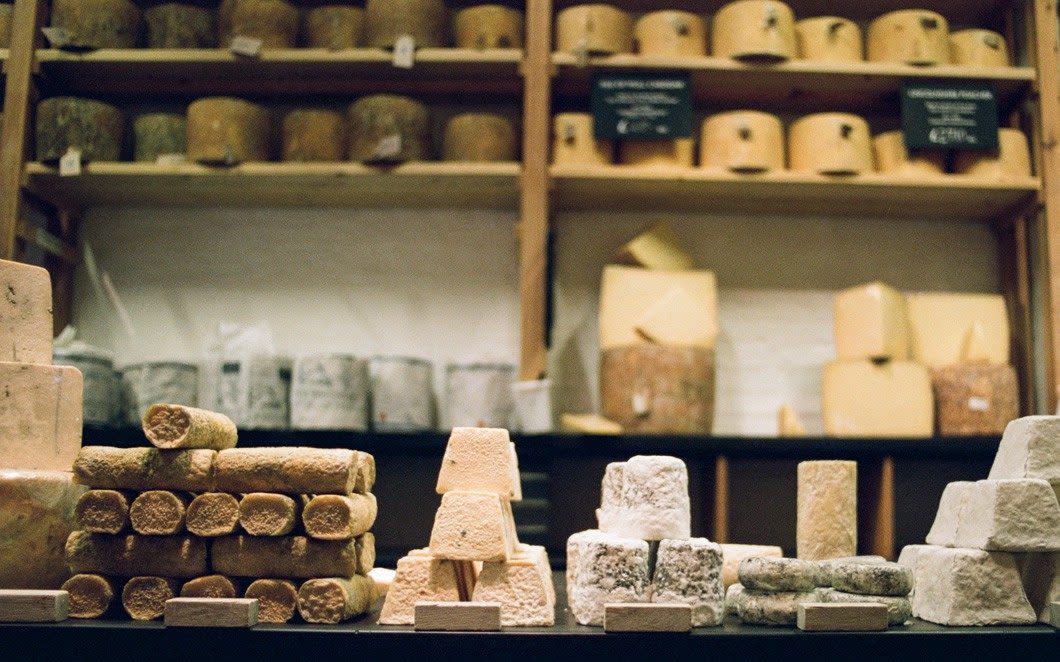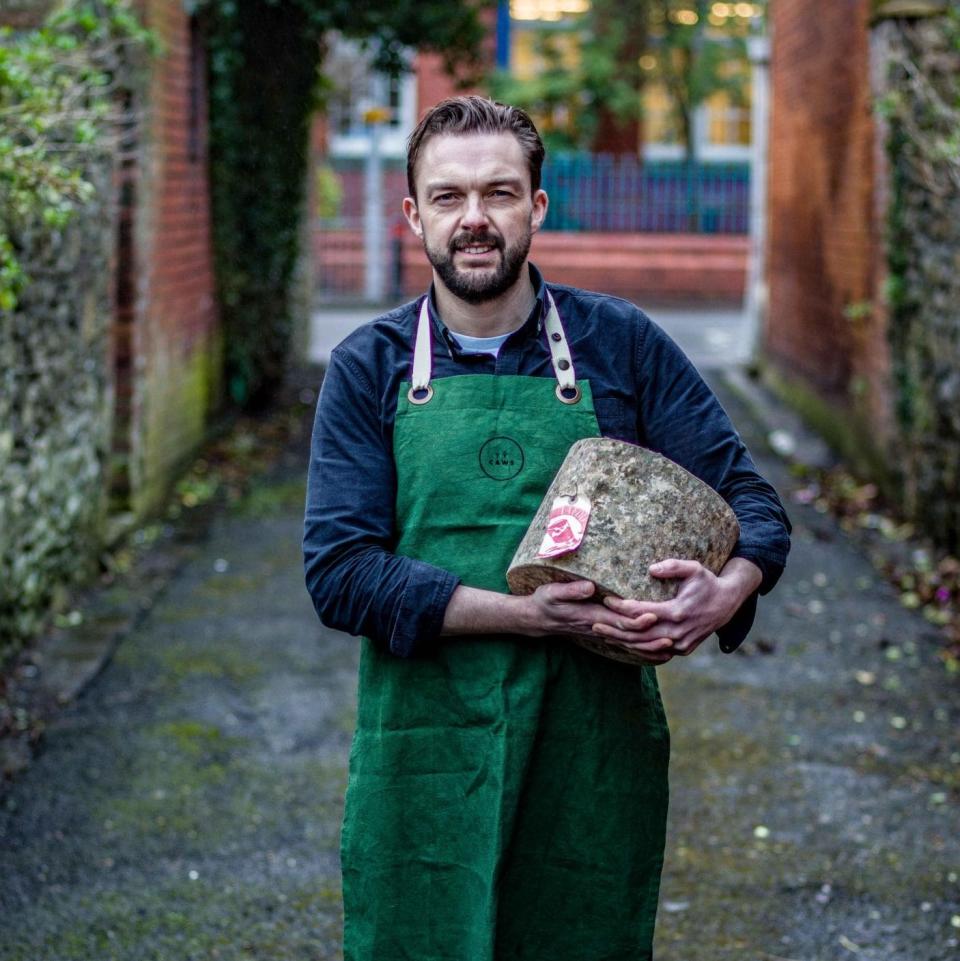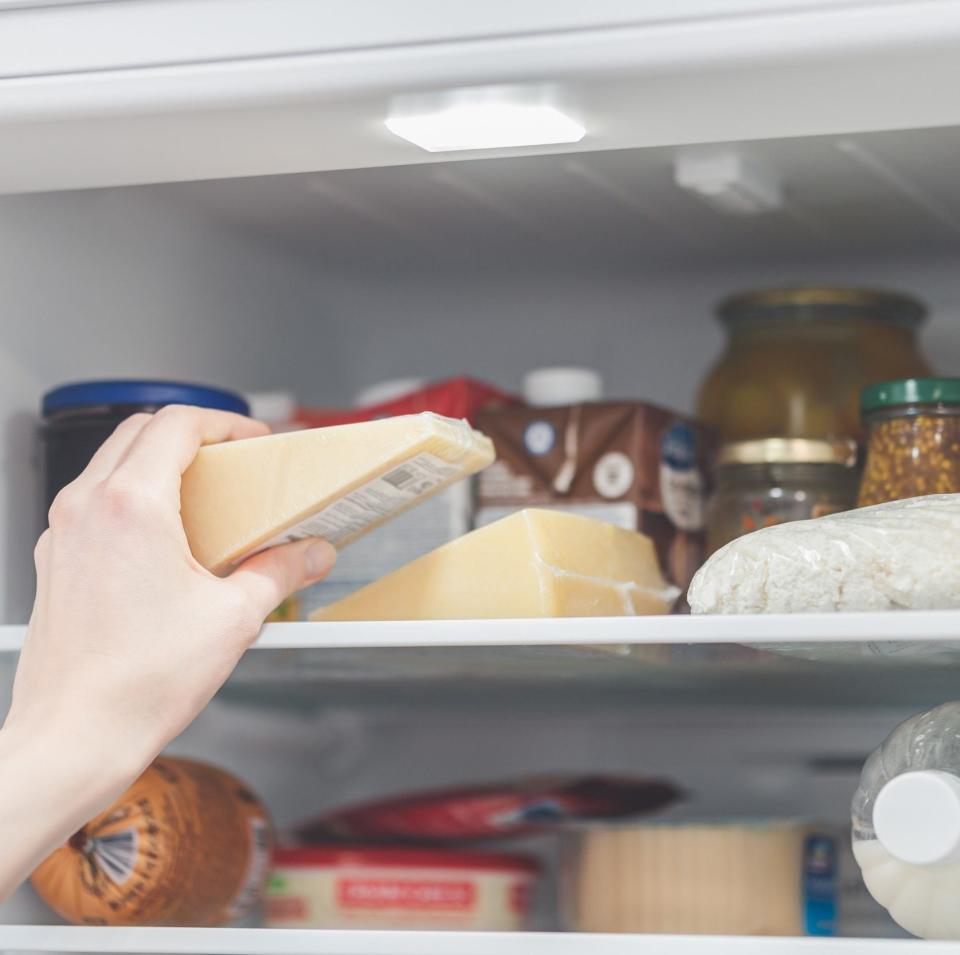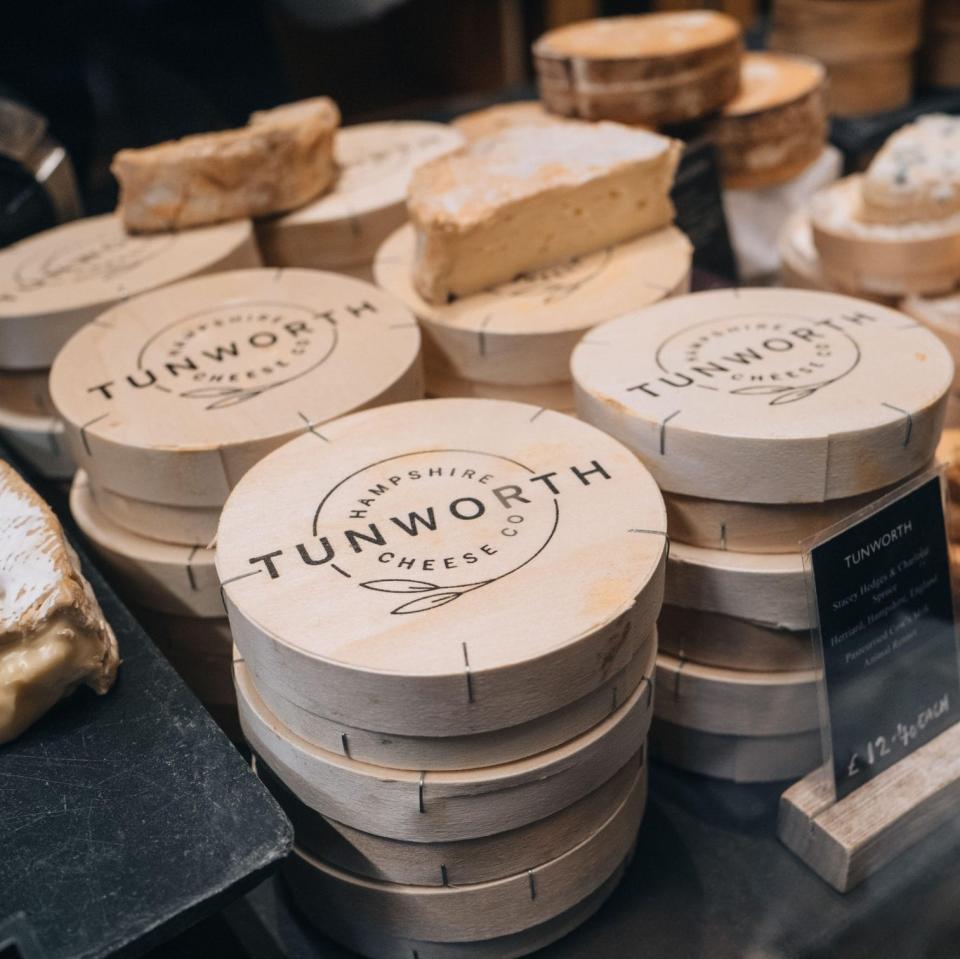The secret to keeping cheddar in peak condition? A damp J Cloth

Britain’s cheesemakers and mongers have been doing strange things in dark corners of their maturing rooms recently, from soaking Stiltons in cider and sprinkling seaweed on bries to burying cheddars in hay.
These were some of the techniques employed by British cheese experts in preparation for the annual Affineur of the Year competition earlier this month, which saw a cheddar aged in Welsh coal named Supreme Champion.
The competition, organised by the Academy of Cheese, aims to push the boundaries of “affinage” – the process of maturing cheeses using different techniques to create new flavours and textures. Each of the 10 finalists was sent four cheeses at just a few days old: a Cropwell Bishop Stilton, Baron Bigod brie-style soft cheese, Quicke’s cheddar and a White Lake Solstice, a soft cheese whose rind is normally washed in Somerset cider brandy. They were asked to mature them in wild and wacky ways over the course of 11 months in the case of the cheddar, or eight weeks for the Baron Bigod. Entries were judged by experts at a live final in London and included a Baron Bigod dusted with apple powder, a cheddar wrapped in fig leaves and a whisky-washed Solstice.

The overall winner was a coal-aged cheddar matured by cheesemonger Owen Davies, owner of Tŷ Caws cheese shop in Cardiff. He left the 8kg cloth-bound Quicke’s cheddar for a year in a specially designed “coal hole”, comprising a chamber lined with Welsh coal constructed by his dad. Judges said the cheese had a complex, fruity character and mineral notes that were quite different to anything else.
Unfortunately, the prototype cheeses are not available to buy yet though Davies is trialling ageing a caerphilly in coal to sell at food markets. Until then, cheese lovers can use a few amateur affinage techniques at home to keep their wedges in tip-top condition. No coal required.

You don’t need a fridge
It turns out the fridge is not always the best place for hard cheeses. “Domestic fridges are often too cold and have a lot of air flow, which can dry out cheeses,” says Estelle Reynolds, retail manager at Neal’s Yard Dairy, which took part in the awards. “The majority of the cheese in our shops is kept at cellar temperature, between 10C and 14C at 90 per cent humidity. If you have a pantry, cellar or garage at the same temperature, it can be a good space to keep cheese.”
Keep it in the salad drawer
Not everyone is lucky enough to have a garage, let alone a cellar or pantry, but there is still plenty that can be done to keep cheeses in good nick in the fridge. Champion affineur Owen Davies says the salad drawer is the next best thing, “If you keep your cheese there, it doesn’t dry out as much and you create a kind of cave with its own environment, protecting it from the fridge’s fans.”

Tupperware can also be used in the same way, he adds, especially for smoked or pungent washed rind cheeses. “They are best kept in their own container so they don’t taint everything else,” he says. “But it’s important to open them every few days so the cheeses don’t suffocate.” If they can’t “breathe”, the microbes on the rind die and the cheese becomes sticky and slimy with off flavours.
Crank up the humidity
To create the full cheese cave experience in your fridge, you need to raise the humidity, says Mark Birchall, chef patron of two Michelin-starred restaurant Moor Hall in Lancashire. The cheese-loving chef has a temperature-controlled cheese room that diners can visit, which is kept at around 10C. But it also has a sink in the corner, filled with fresh water, to keep humidity at around 80 per cent. Cut cheeses are also draped with a damp muslin cloth. “You can do something similar at home by putting a little pot of water or a damp, clean J Cloth in the salad drawer with the wrapped cheeses,” he says. “It keeps them fresh.”
Use waxed paper… or beeswax wraps
Cheesemongers look genuinely upset when you suggest wrapping cheese in cling film. “It gets sweaty and slimy and unpleasant” says a clearly affronted Jazz Reeves, head affineur at cheesemonger Paxton & Whitfield. She recommends keeping cheese in the waxed paper that it is wrapped in by most good cheesemongers. “It stops it drying out, but allows the cheese to breathe,” she says. “I’m also a fan of beeswax wraps (cloth coated in beeswax). You can clean them easily in cold water, so they’re reusable, and they are malleable so you get a nice tight wrap on the cheese.”
Buy cheeses in boxes
“If there’s a straight choice between a pre-packed wedge of brie or a whole camembert in a box, go for the camembert”, instructs Reeves. “With cheeses like Tunworth and Vacherin, the box has its own ecosystem, which keeps the cheese happy.” Boxes help to maintain a cool, humid environment, which keeps the moulds and yeast on the rind in equilibrium and helps the cheese to ripen. “Once a soft or blue cheese is cut and wrapped it’s difficult to get it gooey,” she says. “The quality is only going to go down, not up.”

Buy little and often
Order the cheeseboard at Michelin-starred restaurant, Woven by Adam Smith, near Ascot and you’ll be taken to a magnificent walk-in pantry to choose from a marble counter filled with British cheeses. Executive chef Smith says that even though the room was custom built to keep cheese in great condition, he’s learned not to store too much at once. “We source our cheeses from cheesemongers who have the best maturing rooms, so it makes sense to buy little and often so it’s in the best condition,” he says. “That’s good advice for cheese at home too. Don’t buy too much. It’s better to have enough for just a few days and then buy more.”
Achieving peak goo
A bulging brie is a beautiful sight on a cheeseboard, but achieving peak goo requires know-how. “If a brie is chalky, then get it out of the fridge for a few hours and it should start to break down,” says Davies. “Warmer temperatures help cheeses ripen. Cold temperatures slow them down.”
“You can tell if a brie is ripe without cutting it,” he adds. If the rind is still very white and springy to the touch, then it’s under-ripe. Over-ripe cheeses will feel like a waterbed when you press the middle and there will be a strong whiff of ammonia (which smells like bleach or stale urine). You’re looking for something in the middle – some brown flecks on the rind and squidgy near the corners with just a hint of ammonia.
“Tell the cheesemonger when you’re planning to eat the cheese because they can advise what day it will be at its best,” adds Reynolds back at Neal’s Yard. “We prefer to sell soft cheeses that are still a little curdy in the middle. If people are buying cheese from us, but then take it to the pub and on the Tube home, it’s going to get softer.”
A final trick is to flip over soft cheeses in the fridge every few days. “This stops moisture sinking to the bottom and it getting soggy,” she says. And as all good affineurs know, nobody likes a soggy-bottomed brie.


 Yahoo News
Yahoo News 
